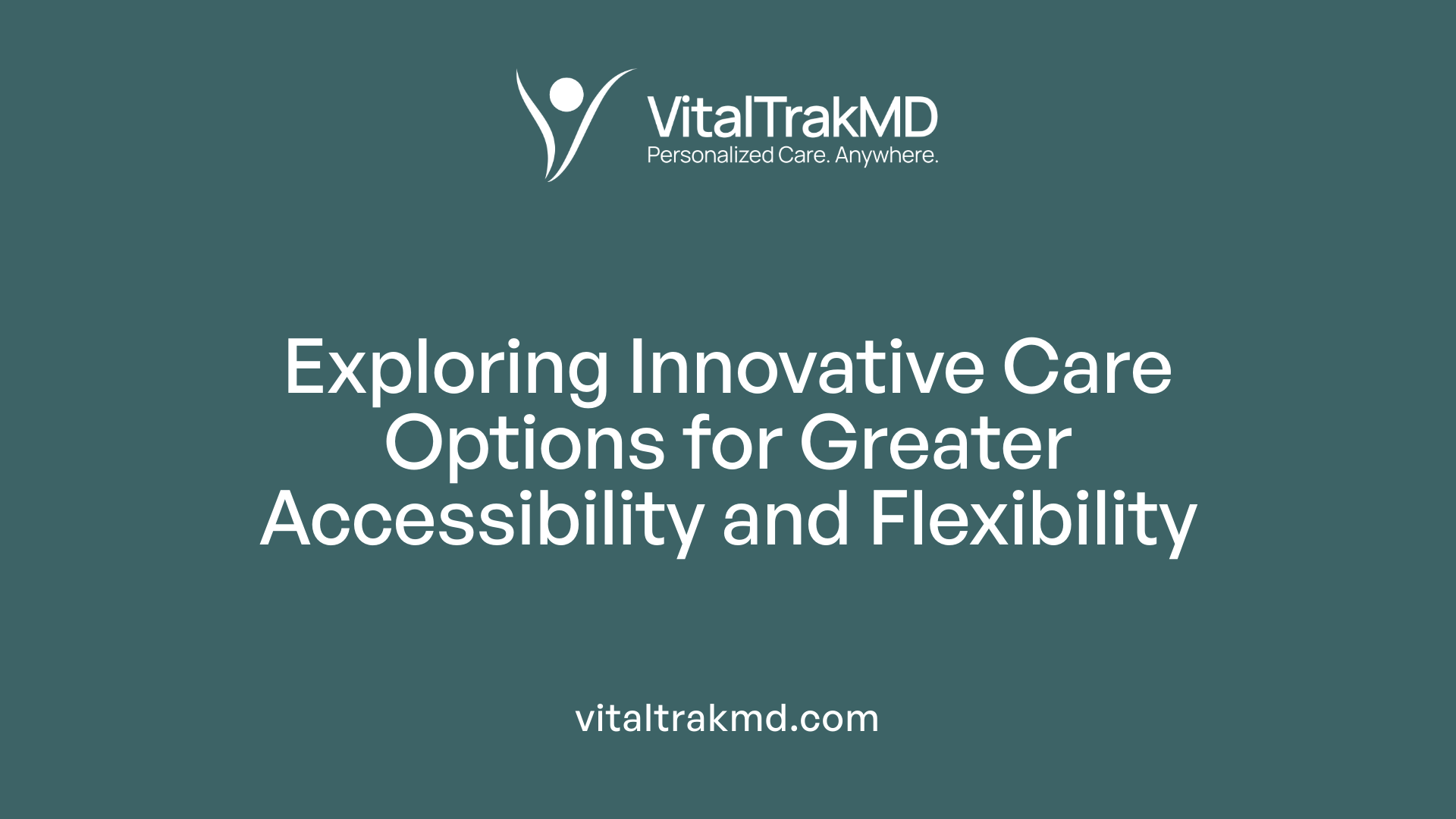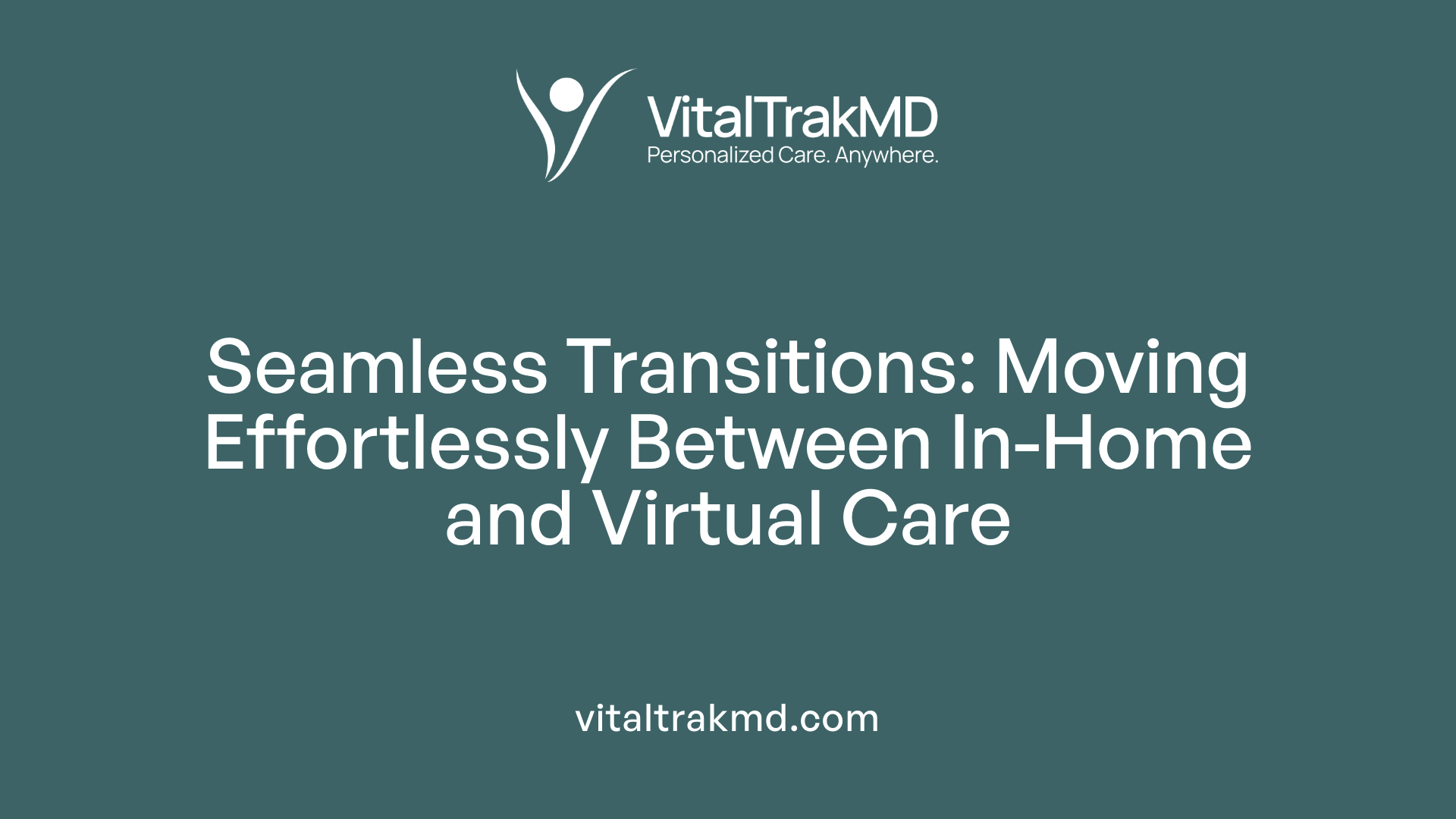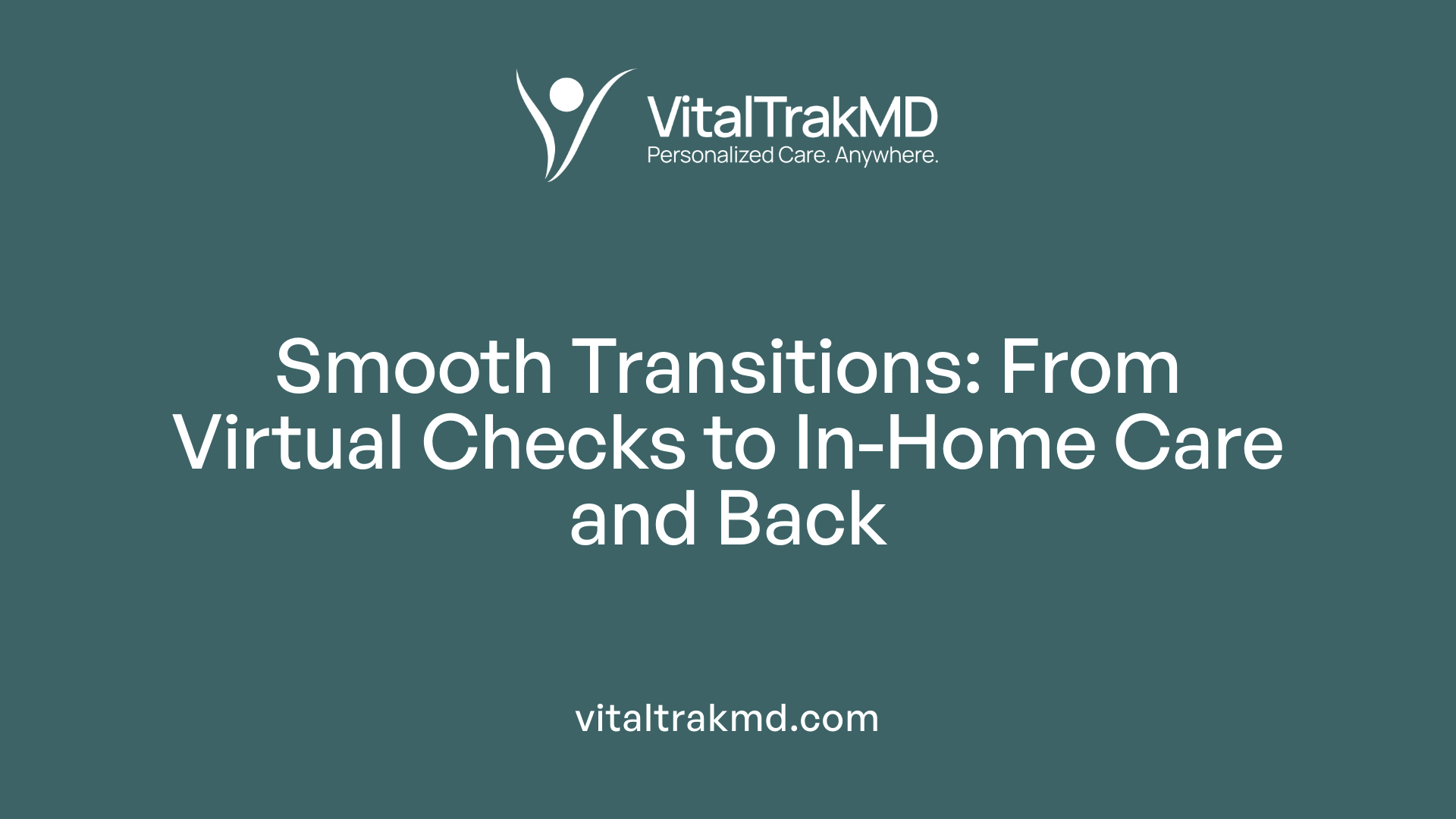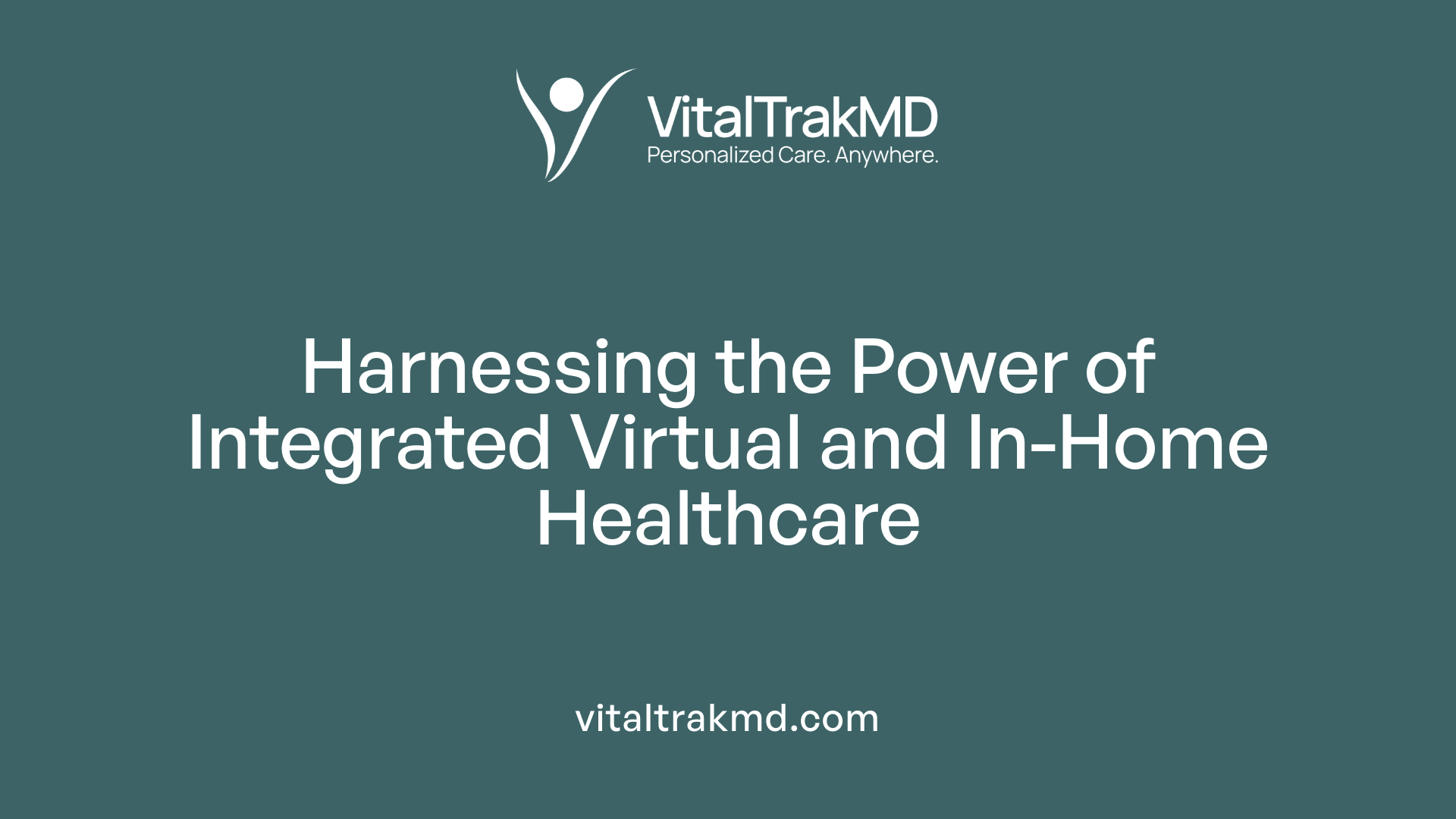Can I Switch Between In-Home and Virtual Care Easily?

Understanding the Ease of Switching Between Care Modes in Today's Healthcare Landscape
The evolution of healthcare delivery has introduced versatile models that blend in-home and virtual care options, emphasizing accessibility and patient convenience. With advances in technology and integrated care frameworks, patients can now navigate seamlessly between different care settings. This article explores the mechanisms, benefits, and technological facilitators of switching between in-home and virtual healthcare services, providing insights into how modern health systems are aligning with patient needs.
Accessibility and Flexibility in Modern Healthcare Systems

How accessible and flexible are care options in a modern healthcare system?
Today's healthcare landscape emphasizes increased accessibility and adaptability through various innovative approaches. Healthcare providers are adopting hybrid care models that combine in-person services with virtual care, allowing patients to choose the most convenient and appropriate mode of treatment.
Digital tools such as telemedicine, remote patient monitoring, and health platforms enable continuous care outside traditional settings. For example, patients can manage chronic conditions like diabetes or high blood pressure through virtual check-ins and remote vital sign tracking, eliminating the need for frequent in-office visits.
Seamless care pathways are designed to facilitate fluid movement between different care environments. Patients can transition smoothly from hospital inpatient stays to home care, utilizing virtual ICU, hospital-at-home programs, and telerehabilitation services. These integrated systems help in managing recovery and ongoing health needs in a patient-centered fashion.
Additionally, extended clinic hours, virtual follow-up appointments, and online scheduling enhance access, especially for those with mobility challenges or tight schedules. Many services now operate 24/7, allowing patients to consult healthcare providers at their convenience.
The combination of well-designed physical spaces and advanced digital technology results in a resilient healthcare infrastructure. This setup ensures that care delivery adapts swiftly to individual needs, improves health outcomes, and maintains continuity in the face of unforeseen circumstances.
| Care Approach | Description | Benefits |
|---|---|---|
| Hybrid Models | Blend of in-person and virtual care | Increased accessibility, patient choice |
| Remote Monitoring | Devices and apps track health data remotely | Better chronic disease management |
| Digital Platforms | Online portals and health apps | Streamlined communication, scheduling |
| Care Pathways | Transitions between inpatient, home, telehealth | Seamless care, patient-centered services |
| Extended Hours | Virtual clinics outside regular times | Convenience for busy or remote patients |
In conclusion, modern healthcare systems are making significant strides toward more accessible and flexible care through integrated technological solutions and adaptable service models, better serving diverse patient populations.
Ease of Switching Between In-Home and Virtual Healthcare Services

How easy is it to switch between in-home and virtual healthcare services?
Switching between in-home and virtual healthcare services is generally designed to be straightforward, although the ease can vary depending on several factors. During health crises such as the COVID-19 pandemic, the transition to virtual care became more common as patients sought to minimize in-person visits. This shift was facilitated by digital platforms, remote monitoring tools, and integrated care models that support seamless transitions.
Patients find virtual visits especially convenient for managing chronic conditions, urgent care needs, or routine check-ins. They can access care through devices like smartphones, tablets, or computers, often with minimal technical challenges. Healthcare providers have developed user-friendly platforms, such as patient portals and telehealth apps, to streamline the experience. These systems often include pre-visit instructions, online forms, and straightforward login procedures to enhance ease of use.
However, some barriers still exist. Technical limitations such as poor internet connectivity or unfamiliarity with digital tools can hinder smooth transitions. Personal preferences also play a role; some patients favor in-person examinations for comprehensive assessment and reassurance. Additionally, certain treatments requiring hands-on procedures cannot be done virtually, which necessitates switching back to in-person care.
Provider systems are increasingly designed with flexibility in mind, enabling patients to move effortlessly between care settings. Digital command centers and care coordination platforms help manage transitions efficiently, ensuring that health records and monitoring data are accessible across both virtual and physical environments.
External factors, including widespread health crises, have accelerated the adoption of virtual care, making switching more accessible and even routine for many. Overall, the ease of switching depends on the integration of technology, the quality of patient and provider communication, and individual preferences, with recent trends toward more seamless, hybrid care models continuing to improve access.
The Transition Process: From Virtual to In-Home Care and Vice Versa

How does the process work when transitioning from virtual to in-home care or vice versa?
Transitions between virtual and in-home care are designed to be seamless, ensuring patients continue to receive the right level of support for their health needs. The process begins with clear communication between healthcare providers and the patient. Providers may use digital platforms to share care instructions, medication updates, and health monitoring tips.
Prior to switching care modes, patients and caregivers often receive targeted education on what to expect, how to manage their conditions, and how to use technology effectively. This helps build confidence and reduces anxiety during transitions.
Structured models like the Care Transitions Model, Coleman Care Transition Intervention, or the Transitional Care Model provide frameworks for smooth handovers. These models emphasize detailed planning, thorough documentation, and prompt follow-up, usually within 48-72 hours post-discharge or after a virtual visit.
Designated transition coordinators, often nurses or trained case managers, play a crucial role. They monitor progress, address red flags such as medication errors or worsening symptoms, and reinforce self-care and symptom management skills.
Effective transitions aim to close care gaps, reduce avoidable hospital readmissions, and promote patient independence. Using technology—such as remote monitoring devices, patient portals, and secure messaging—facilitates real-time updates and coordinated care.
Overall, the goal is to maintain continuity, safety, and patient engagement regardless of the care setting, ensuring health outcomes are optimized across virtual and in-home environments.
Benefits of Integrating Virtual and In-Home Healthcare Services
 Combining virtual and in-home healthcare creates a more flexible and responsive system that benefits both patients and providers. Patients experience greater convenience because they can access medical advice, monitor health, and manage treatment from their own homes without the need to travel to a clinic or hospital.
Combining virtual and in-home healthcare creates a more flexible and responsive system that benefits both patients and providers. Patients experience greater convenience because they can access medical advice, monitor health, and manage treatment from their own homes without the need to travel to a clinic or hospital.
This integration is especially valuable for those with chronic conditions like diabetes or heart disease. Virtual visits enable regular check-ins, medication adjustments, and remote monitoring of vital signs, which support better management of ongoing health issues. It also makes it easier to detect early signs of complications, leading to quicker interventions.
Cost savings also result from this approach. Reduced hospital visits, fewer emergency room trips, and decreased transportation expenses lower overall healthcare costs. Patients often report higher satisfaction when they can communicate with providers easily and receive continuous care without repeated in-person visits.
Hybrid models that combine in-person and virtual care are effective for complex health needs. They allow care teams to perform physical exams and procedures when necessary while utilizing virtual tools for routine follow-ups, education, and support.
The modern healthcare landscape benefits significantly from these integrated services, making health management more accessible, efficient, and centered around the patient’s comfort and needs. These advancements drive better health outcomes and foster a more patient-focused system.
| Benefit Area | Description | Additional Notes |
|---|---|---|
| Convenience | Easy access from home via phone, tablet, or computer | Eliminates travel barriers |
| Chronic Disease Management | Regular remote monitoring and virtual visits | Improves control of conditions |
| Cost Efficiency | Fewer hospital visits and less travel | Reduces expenses for patients and providers |
| Patient Satisfaction | Enhanced communication and engagement | Increases adherence and health outcomes |
| Care Continuity | Seamless transition between care modes | Supports comprehensive treatment plans |
Effectiveness of Virtual Care Compared to Traditional In-Person Visits
What is the effectiveness of virtual care compared to traditional in-person visits?
Virtual care, also known as telehealth, has proven to be a valuable complement to in-person healthcare services. It is especially effective for managing chronic conditions such as diabetes, high blood pressure, and heart disease through regular virtual check-ins, remote monitoring of vital signs, and medication management.
Patients can discuss a wide range of health conditions via video or phone visits, with typical appointments lasting around 20 minutes or less. These visits often include prescribing medications when appropriate and requesting refills, making ongoing care more accessible.
The impact on health outcomes has been positive. Telehealth services can reduce unnecessary emergency room visits and hospitalizations by providing timely advice, education, and follow-up care. During the COVID-19 pandemic, its role became even more critical, helping to minimize infection risks while maintaining treatment and support.
Patient satisfaction surveys indicate high acceptance, especially among older adults and those in rural or underserved areas, due to the convenience and ease of access. People appreciate being able to connect with providers from their homes using devices like smartphones, tablets, or computers.
Despite its many advantages, virtual care does have limitations. It is not suitable for all treatments, especially those requiring physical exams, procedures, or immediate emergency interventions. Certain populations may face barriers such as limited internet access or low digital literacy.
Overall, virtual care offers comparable effectiveness to in-person visits for many conditions, improving health outcomes, increasing convenience, and reducing costs.
When Is In-Person Care Necessary?

In what situations is in-person care necessary instead of virtual care?
While virtual care offers many conveniences, there are specific scenarios where in-person visits are essential. Physical examinations provide critical insights that digital consultations cannot fully capture.
In-person care becomes necessary when a healthcare provider needs to conduct a physical exam to make an accurate diagnosis. For example, symptoms like severe stomach pain, unexplained skin rashes, skin lesions, or shortness of breath require direct assessment to determine the cause correctly. Injuries such as twisted ankles or deep cuts may also need hands-on evaluation and immediate treatment.
Procedures and urgent diagnostic needs often cannot be addressed virtually. Blood tests, biopsies, X-rays, or screenings require specialized equipment and are only possible in clinical settings. Additionally, treatments that involve injections, wound care, or procedures like suturing necessitate an in-person visit.
Certain populations particularly benefit from physical presence at the healthcare facility. Newborns and young children often require in-person visits for thorough examinations, immunizations, and developmental assessments. Patients needing comprehensive evaluations for complex health issues or those requiring anesthesia or other interventions also rely on in-person care.
In emergency situations, virtual care is unsuitable. Conditions such as severe chest pain, uncontrolled bleeding, or signs of a stroke require immediate hospital visits for urgent intervention.
Overall, whenever a physical assessment, hands-on procedure, or urgent medical intervention is necessary, in-person care remains indispensable to ensure patient safety and proper diagnosis.
Technological Tools Facilitating Seamless Care Transitions
How does technology facilitate seamless transitions between different healthcare modes?
Technology plays a vital role in smoothing the shift from one care setting to another, ensuring continuity and safety for patients. Central to this are electronic health records (EHRs), which enable real-time sharing of comprehensive patient information among healthcare providers. This instant access to medical history, recent test results, and current medications helps clinicians make informed decisions quickly.
Remote monitoring devices and Internet of Things (IoT) sensors are also essential. These tools continuously track vital signs, blood glucose levels, heart rate, and other health metrics. By providing ongoing oversight, they allow healthcare teams to detect early signs of deterioration or complications, facilitating prompt interventions and reducing unnecessary hospital readmissions.
Online scheduling systems and pre-visit preparation tools improve patient access and readiness. Patients can easily book or reschedule appointments, fill out necessary forms digitally, and receive instructions in advance. This reduces delays and ensures patients are prepared for their care, whether virtual or in-person.
Artificial intelligence (AI) and digital assistants further support personalized, proactive care. These technologies analyze patient data to identify risks, recommend tailored care plans, and predict future health needs. AI-driven insights help clinicians coordinate care across different settings—hospital, home, or community—making transitions smoother.
All these technological tools facilitate better communication, coordination, and patient involvement in their own care. The result is safer, more efficient, and highly personalized healthcare that adapts seamlessly to each patient's evolving needs.
| Technology Tool | Functionality | Impact on Care Transitions |
|---|---|---|
| Electronic Health Records (EHR) | Real-time data sharing among providers | Improves information accuracy and timeliness during transitions |
| Remote Monitoring Devices | Continuous health data collection | Enables early warning and preventive response |
| Online Scheduling & Forms | Booking and preparation digitally | Reduces delays and improves readiness |
| AI and Digital Assistants | Data analysis and personalized recommendations | Supports tailored, proactive care strategies |
These advances are helping healthcare systems deliver more connected, patient-centered care, ensuring smooth movement across care levels while maintaining safety and quality.
Moving Forward: Embracing a Fluid Transition in Healthcare Delivery
The landscape of healthcare delivery is rapidly shifting towards models that prioritize flexibility, accessibility, and patient-centered approaches. The integration of advanced technologies, coordinated care models, and telehealth platforms ensures that patients can switch between in-home and virtual care with ease. As healthcare systems continue to develop digital infrastructure and foster clinician expertise in telehealth tools, the transition process becomes smoother, more reliable, and more effective. These innovations not only enhance patient experience but also improve clinical outcomes and reduce costs. Embracing such fluid care models is essential for building resilient healthcare systems capable of responding swiftly to diverse patient needs and future challenges.
References
- Virtual Care
- Virtual and in-person care merge for a healthier future
- Telehealth: Technology meets health care
- Is virtual care as good as in-person care?
- Telehealth in Home Health Care: Improving Patient ...
- MinuteClinic Virtual Care
- Virtual Care vs Telehealth: Understanding the Distinctions
- How Virtual Care Is Transforming Therapy for Older Adults
Recent articles
Want to Feel Better and Live Healthier?
Join hundreds of patients taking control of their health with personalized care that fits their life – not the other way around.
Rated 4.8/5 by 32+ customers







